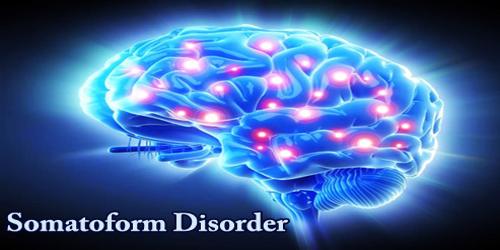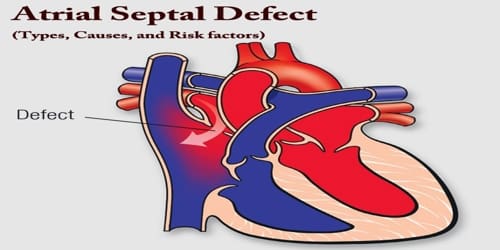Definition: The Somatoform Disorders, also known as Somatic Symptom Disorders (SSD), formerly known as “Somatization Disorder”, are a group of psychological disorders in which a patient experiences physical symptoms that are inconsistent with or cannot be fully explained by any underlying general medical or neurologic condition. These disorders, as a group, are included in a number of diagnostic schemes of mental illness, including the Diagnostic and Statistical Manual of Mental Disorders. (Before DSM-5 this disorder was split into somatization disorder and undifferentiated somatoform disorder.) Medically unexplained physical symptoms account for as many as 50% of new medical outpatient visits. Physical symptoms or painful complaints of unknown etiology are fairly common in pediatric populations.
In general, somatoform disorder deals with the physical aspects of unknown illnesses, and on the other hand, dissociative disorders deal with the patient’s sense of identity or memory. There are seven different kinds of somatoform disorders, each with their own description, or way to be identified. The major problem with somatoform disorders is that it is very hard to recognize and treat because the illness is well camouflaged to appear like normal illnesses. This would create situations where people are being treated for sicknesses that they do not really have, which is an overuse medical services and resources.
Somatization in children consists of the persistent experience and complaints of somatic distress that cannot be fully explained by a medical diagnosis. They can be represented by a wide spectrum of severity, ranging from mild self-limited symptoms, such as stomachache and headache, to chronic disabling symptoms, such as seizures and paralysis. Somatic symptom disorder is difficult to diagnose and treat. Some advocates of the diagnosis believe this is because proper diagnosis and treatment requires psychiatrists to work with neurologists on patients with this disorder.
Causes and Risk Factors –
Somatoform disorder was first described by Paul Briquet in 1859 and was subsequently known as Briquet’s syndrome. He described patients who had been sickly most of their lives and complained of multiple symptoms from different organ systems. Symptoms persist despite multiple consultations, hospitalizations and investigations.
The exact cause of ‘Somatoform Disorder’ isn’t clear, but any of these factors may play a role:
- Genetic and biological factors, such as an increased sensitivity to pain
- Family influence, which may be genetic or environmental, or both
- Personality trait of negativity, which can impact how you identify and perceive illness and bodily symptoms
- Decreased awareness of or problems processing emotions, causing physical symptoms to become the focus rather than the emotional issues
- Learned behavior – for example, the attention or other benefits gained from having an illness; or “pain behaviors” in response to symptoms, such as excessive avoidance of activity, which can increase your level of disability.

Risk factors for ‘Somatoform Disorder’ include:
- Having anxiety or depression
- Having a medical condition or recovering from one
- Being at risk of developing a medical condition, such as having a strong family history of a disease
- Experiencing stressful life events, trauma or violence
- Having experienced past trauma, such as childhood sexual abuse
- Having a lower level of education and socio-economic status
Many people who have somatoform disorder will also have an anxiety disorder. People with somatoform disorder are not faking their symptoms. The distress they experience from pain and other problems they experience are real, regardless of whether or not a physical explanation can be found. And the distress from symptoms significantly affects daily functioning.
Complications –
Somatoform disorder can be associated with:
- Poor health
- Problems functioning in daily life, including physical disability
- Problems with relationships
- Problems at work or unemployment
- Other mental health disorders, such as anxiety, depression and personality disorders
- Increased suicide risk related to depression
- Financial problems due to excessive health care visits

Types and Symptoms of Somatoform Disorder –
Different somatoform disorders are distinguished by thoughts, emotions, and actions related to somatic symptoms. There are seven types of somatoform disorders where individuals present with a multitude of clinically significant symptoms that cannot be explained, including:
Somatization Disorder – Somatization disorder, used to be known as Briquet’s syndrome since he was the man who first recognized it, require four symptoms of pain, two symptoms in the digestive tract, one symptom involving the sexual organs, and one symptom related to the nervous system. Somatization disorder is a chronic disorder that is persistent throughout a person’s life and is likely to appear in families.
Conversion Disorder – Conversion disorder occurs when physical symptoms mimic symptoms of a neurological disorder even though no neurological disorder is present. Symptoms may include paralysis, vision or hearing loss, or seizures. A conversion disorder is generally the result of trauma and impacts a person’s senses and movement.
Pain Disorder – Somatoform pain disorder is characterized by recurring pain in one or more parts of the body with no known cause. A pain disorder diagnosis is given when pain cannot be accounted for by a medical or other disorder, when pain causes considerable distress and when psychological factors play a significant role in the onset, magnitude and duration of the pain.
Hypochondriasis – Hypochondriasis, formerly known as hypochondriacal neurosis, is where the someone has excessive fear or preoccupation with having a serious illness in spite of medical testing and reassurance.
Other specified somatic symptom and related disorder – Somatoform disorder not otherwise specified is a diagnosis used for symptoms that meet many but not all of the required criteria for a somatoform disorder diagnosis. Presentations that may be specified using this designation include:
- Brief somatic symptoms disorder
- Brief illness anxiety disorder
- Illness anxiety disorder without excessive health-related behaviors
Unspecified somatic symptom and related disorder – Like the specific somatic symptom and related disorders diagnosis, undifferentiated somatoform disorder applies to individuals who have symptoms characteristic of somatic disorders that do not meet full criteria for any somatoform disorder. However, the unspecified somatic symptom and related disorder diagnosis should only be given in unusual situations, or in situations where there is insufficient information to make a more specific diagnosis.
Symptoms: Somatoform Disorder is a form of mental illness that causes one or more bodily symptoms, including pain. The symptoms may or may not be traceable to a physical cause including general medical conditions, other mental illnesses, or substance abuse. But regardless, they cause excessive and disproportionate levels of distress. The symptoms can involve one or more different organs and body systems, such as: Pain, Neurologic problems, Gastrointestinal complaints, Sexual symptoms.

Thoughts, emotions, and behaviors associated with somatoform disorders may consist of the following:
- Persistent worry about possible sickness
- Interpretation of normal bodily sensations as an indication of severe physical sickness
- Fear that symptoms are dire or life-threatening in the absence of facts or medical confirmation
- Mistrust of medical assessments and treatment
- Excessive visits to a physician or hospital that never alleviate concerns
- More significant impairment than what is commonly expected from a medical circumstance
Doctors need to perform many tests to rule out other possible causes before diagnosing somatoform disorders. The diagnosis of somatoform disorders can create a lot of stress and frustration for patients. They may feel unsatisfied if there’s no better physical explanation for their symptoms or if they are told their level of distress about a physical illness is excessive. Stress often leads patients to become more worried about their health, and this creates a vicious cycle that can persist for years.
Consequently, any person suffering from a poorly understood illness can potentially fulfill the criteria for this psychiatric diagnosis, even if they exhibit no psychiatric symptoms in the conventional sense. In 2013–14, there were several widely publicized cases of individuals being involuntarily admitted to psychiatric wards on the basis of this diagnosis alone. This has raised concerns about the consequences of potential misuse of this diagnostic category.
Treatment and Prevention of Somatoform Disorders: Psychotherapy, more specifically, cognitive behavioral therapy (CBT), is the most widely used form of treatment for somatoform disorder or Somatic symptom disorder (SSD). In 2016, a randomized 12-week study suggested steady and significant improvement in health anxiety measures with cognitive behavioral therapy compared to the control group.
CBT can help in some of the following ways:
- Learn to reduce stress
- Learn to cope with physical symptoms
- Learn to deal with depression and other psychological issues
- Improve quality of life
- Reduce preoccupation with symptom
Moreover, brief psychodynamic interpersonal psychotherapy (PIT) for patients with multisomatoform disorder has shown its long-term efficacy for improving the physical quality of life in patients with multiple, difficult-to-treat, medically unexplained symptoms.
Antidepressant medications may be used if a co-occurring condition, such as anxiety or depression, is present. Medications alone can’t resolve a somatoform disorder, but they can help alleviate the symptoms of associated co-occurring conditions, especially when combined with psychotherapy.
Little is known about how to prevent somatic symptom disorder. However, these recommendations may help.
- If you have problems with anxiety or depression, seek professional help as soon as possible.
- Learn to recognize when you’re stressed and how this affects your body and regularly practice stress management and relaxation techniques.
- If you think you have somatic symptom disorder, get treatment early to help stop symptoms from getting worse and impairing your quality of life.
- Stick with your treatment plan to help prevent relapses or worsening of symptoms.
However, most believe that it is better not to give the patients any drugs as treatment, but in some cases, it has been very successful. Alternative treatment such as acupuncture, hydrotherapy, therapeutic massage, meditation, botanical medicine, and homeopathic treatment can help people with pain or somatoform disorders would be able to ease their pain, and soul in some situations.
Information Sources:
















